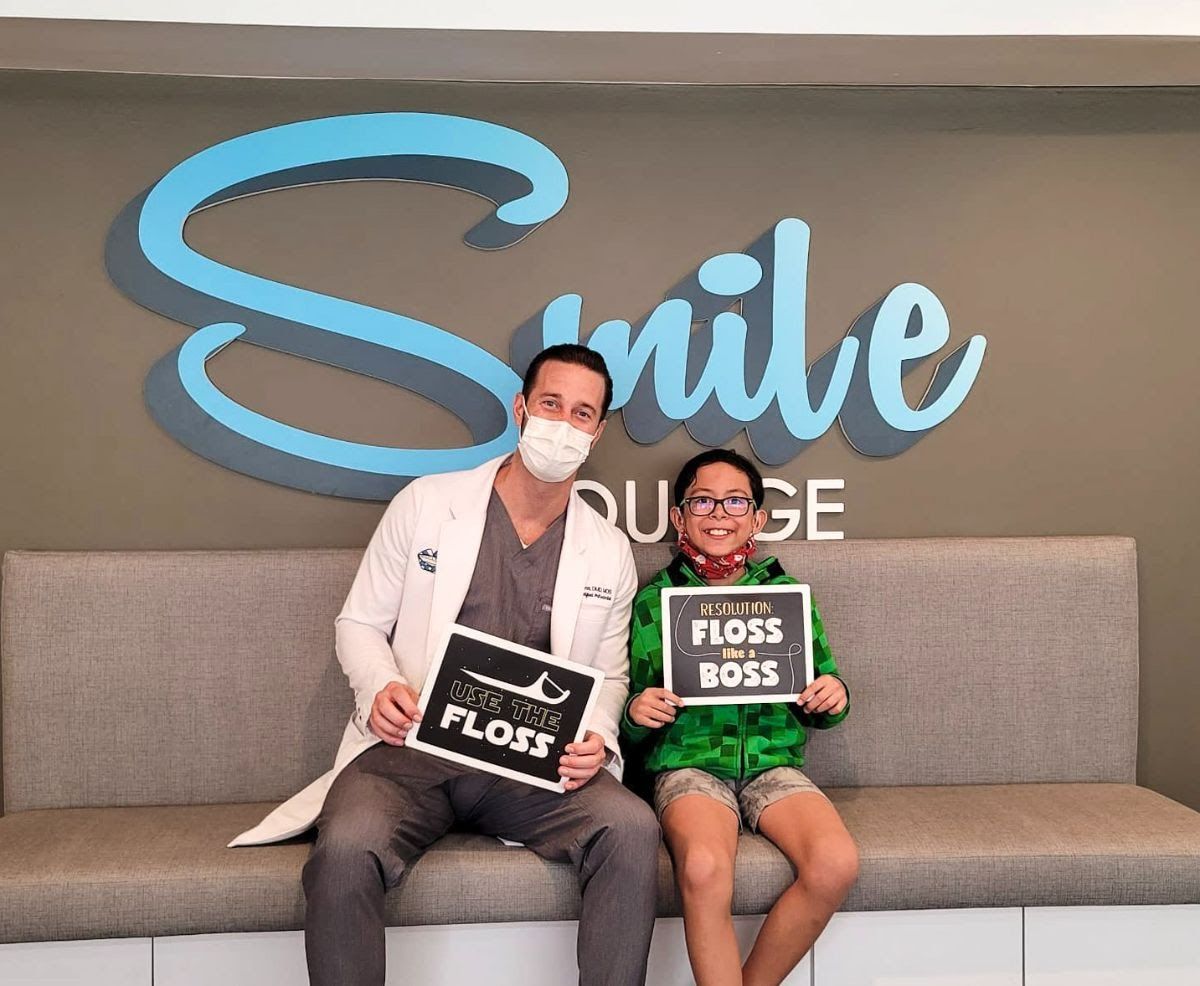Here at Orthodontics of South Miami, we hear from parents every day who are wondering how to guarantee healthy smiles for their children. Many of them have the same question: how will they know if—and when—their child needs orthodontic treatment? There are many factors to consider when determining whether or not a child is likely to require braces, clear aligners, or other types of treatment. This includes their age, the way their teeth and jaws are aligned, and the results we hope to achieve. When you think about it, it’s kind of a loaded question! Recognizing and treating a child’s misaligned jaw is the very first step in the process of healthy smiles.
That’s one reason the American Association of Orthodontists recommends every child see an orthodontist by around 7 years old. At this age, most children will have enough dental “landmarks” in place that an experienced orthodontist like Dr. Ross or Dr. Rothenberg can examine their teeth, jaw, and bite to ensure everything is developing normally.
While our doctors create a customized treatment plan for recognizing and treating a child’s misaligned jaw, there are several common conditions they tend to look for during an initial evaluation. We’ve found that it’s helpful to outline these for parents so they can better understand how we’re able to successfully correct these issues with orthodontics. If you’ve been wondering whether your young child could benefit from treatment with our expert team, keep reading below to learn more!
Crowded teeth
Brushing and flossing regularly are essential for maintaining a healthy mouth, but crowded teeth can make this difficult. If your child is unable to keep up a good dental hygiene routine, they’ll be more likely to develop tooth decay, cavities, and other dental problems. If your child has crowded teeth that make it hard to care for their smile, orthodontic treatment can move them into better positions in small increments over time. This will give them a more evenly spaced smile that’s easier to clean! Treatment can also lessen any facial tension and relieve any chewing or speech difficulties.
Gapped teeth
Gaps in teeth are very common, especially in childhood. They can occur for a variety of reasons, such as genetics, thumb or finger sucking, and extended bottle or pacifier use. If your child has a bit too much space between their teeth, our doctors will be able to identify the underlying cause and address it with a personalized treatment plan designed to close the gaps and improve the overall appearance of their smile.
Missing teeth
Sometimes a more noticeable gap between the teeth exists because of congenitally missing teeth that never grew in. This type of gap may also be created when permanent teeth are lost due to injury or disease. If this is something your child has experienced, we can use braces to move the existing teeth into the proper positions, and then your dentist can place a bonded bridge or implant to fill the gap formed from the missing tooth.
This approach allows us to create an evenly-spaced smile for your child that feels more functional and looks great, too. Additionally, sometimes we can use braces to completely close the spaces left from missing teeth so that no restorations are needed when treatment is complete. While this may take a little longer, it eliminates the need for future dental treatment that could be costly.

Open bite
If your child has an open bite, the upper and lower rows of the front teeth don’t touch or close when smiling or chewing. Many open bite cases come from extended thumb sucking in childhood, which can cause the teeth to grow into a noticeably rounded formation.
Whatever the root cause, an open bite will generally be treated with a combination of braces or aligners and an orthodontic appliance known as a “bluegrass roller.” This device prevents the tongue from putting pressure against the anterior teeth when swallowing, thus training it to swallow correctly.
Once treatment is complete, your child will enjoy an aligned bite that allows them to close their teeth properly and enjoy all their favorite foods with ease.
Underbite
An underbite occurs when the bottom teeth protrude in front of the upper teeth. This type of bite misalignment can cause pain at the jaw joint and the angled pressure can wear down some of the front teeth. Children with underbites have quite a few treatment options available to them, including:
- an upper jaw expander, which can be widened nightly until treatment is complete
- a reverse-pull face mask, which wraps around the head and attaches to metal bands on the back upper teeth to pull the upper jaw forward
- traditional braces to adjust the misaligned teeth
Treating an underbite successfully will help relieve any pain and discomfort, and make smiling, eating, and even breathing easier for your child!
Deep overbite
When a child has a deep overbite, the lower teeth recede so far behind the upper teeth that they bite into the roof of the mouth. The upper front teeth also overlap the lower front teeth. Out of all the bite disorders, a deep overbite is the most detrimental to the teeth and health of the jaw joints. It can also have an impact on the shape and appearance of a child’s face.
Depending on how complex the case is, treatment for a deep overbite may require orthodontics and restorative dentistry together, or orthodontics alone may be able to correct it. This will not only improve the functionality of your child’s teeth but will also dramatically improve the appearance of their smile.
Overjet
If a child has an overjet, commonly referred to as “buck teeth,” their top front teeth will protrude far beyond the bottom front teeth. It’s most effectively treated when diagnosed early, as this allows us to guide a child’s tooth eruption and use their growth to our advantage. The child’s age and specific needs will determine what treatment approach we take, but options will usually include:
- bite correction devices
- traditional braces
- removable orthodontic appliances
- tooth removal
- surgery
Once a child’s overjet issues have been treated and corrected, they’ll be left with a beautifully balanced smile.

Find your child’s best smile at Orthodontics of South Miami
If you suspect your child would benefit from orthodontic treatment, we’d love to meet you both and see how their smile is developing so far! Orthodontics of South Miami is proud to provide customized care for every child we treat, and we work hard to offer families a stress-free process from start to finish. That starts with recognizing and treating a child’s misaligned jaw!
If you’re in the Miami area and are interested in learning more, get in touch today to schedule a FREE consultation with one of our amazing doctors. Whatever your child needs, we’ll provide them with world-class orthodontic service!
